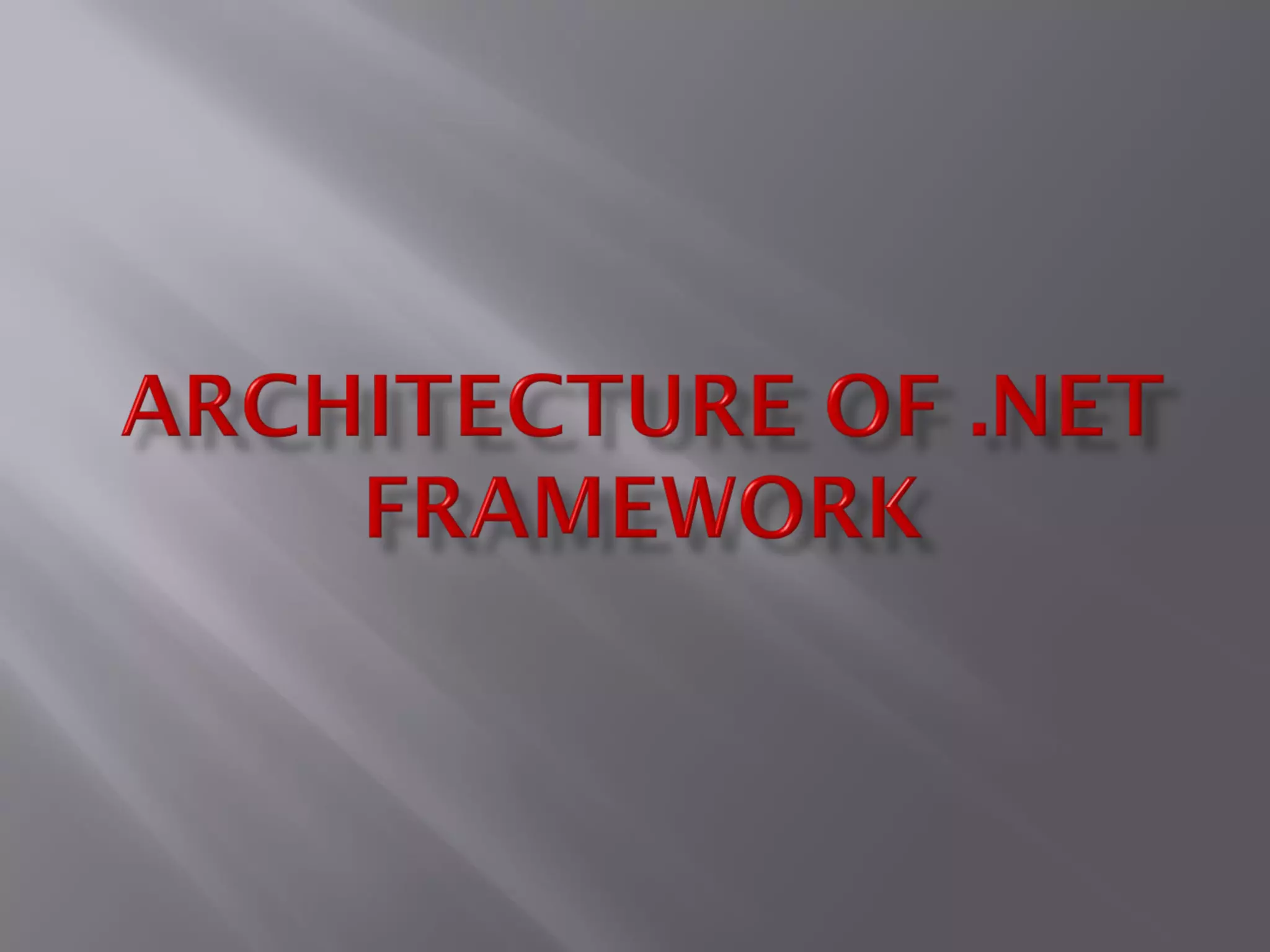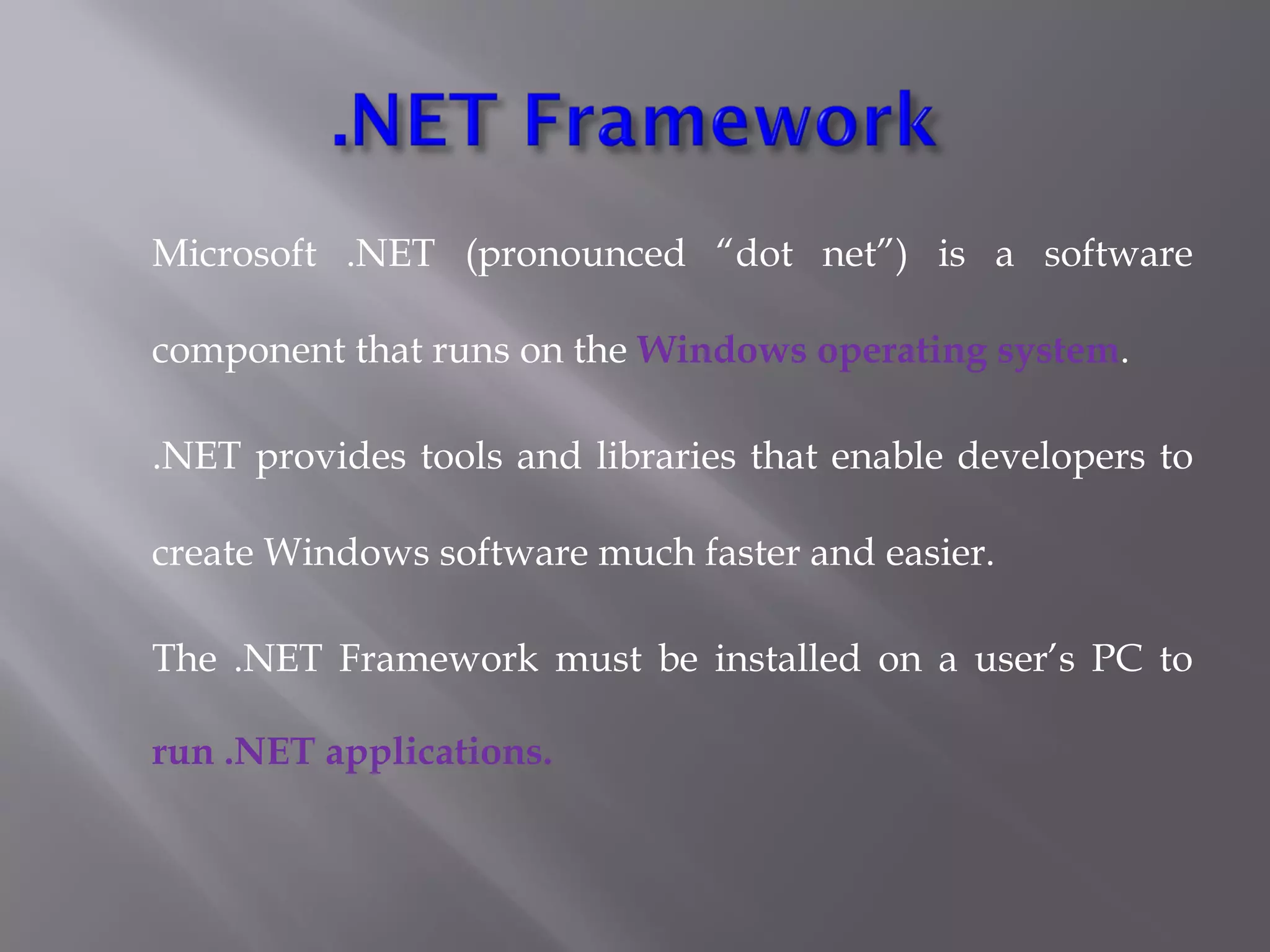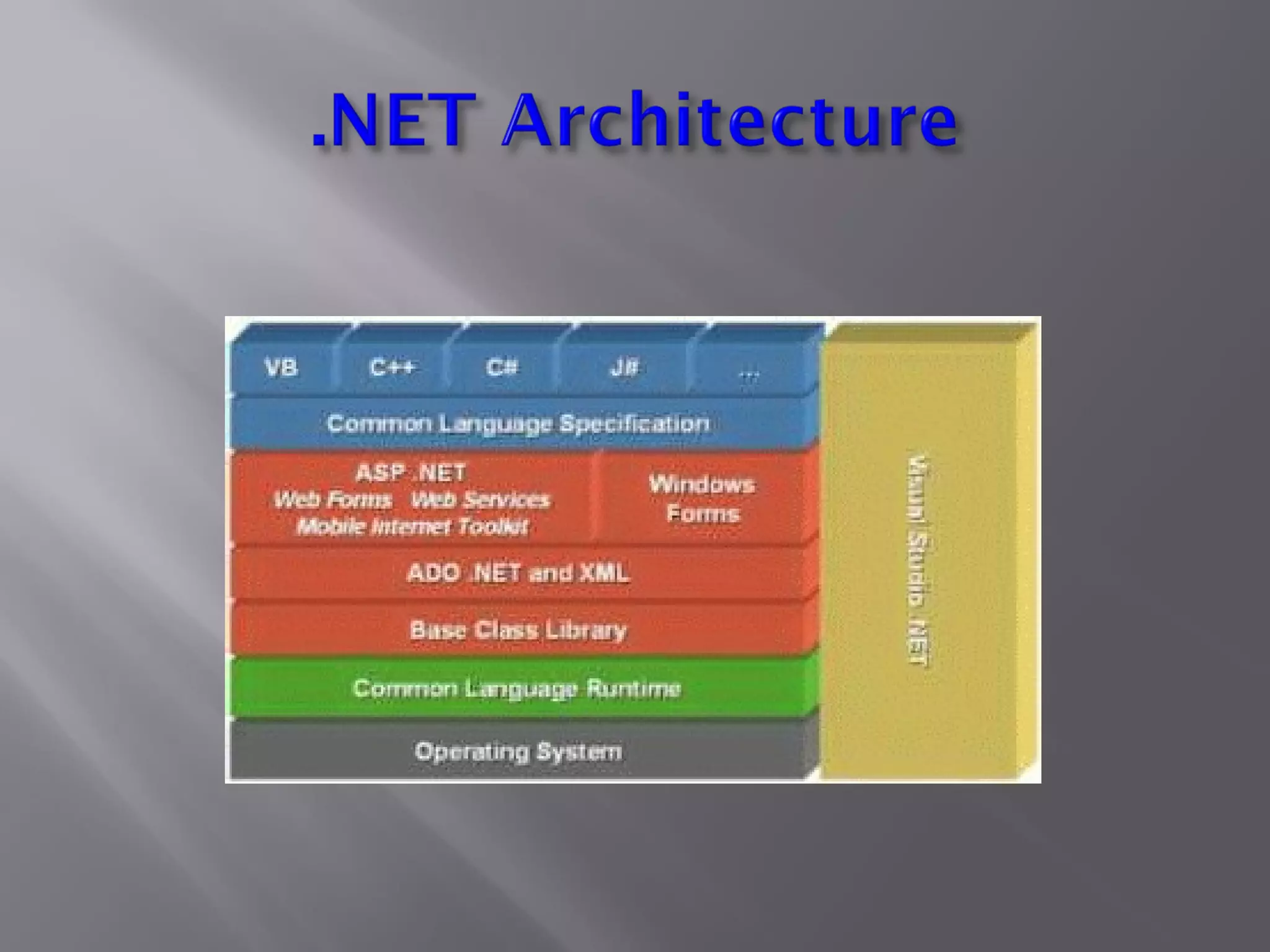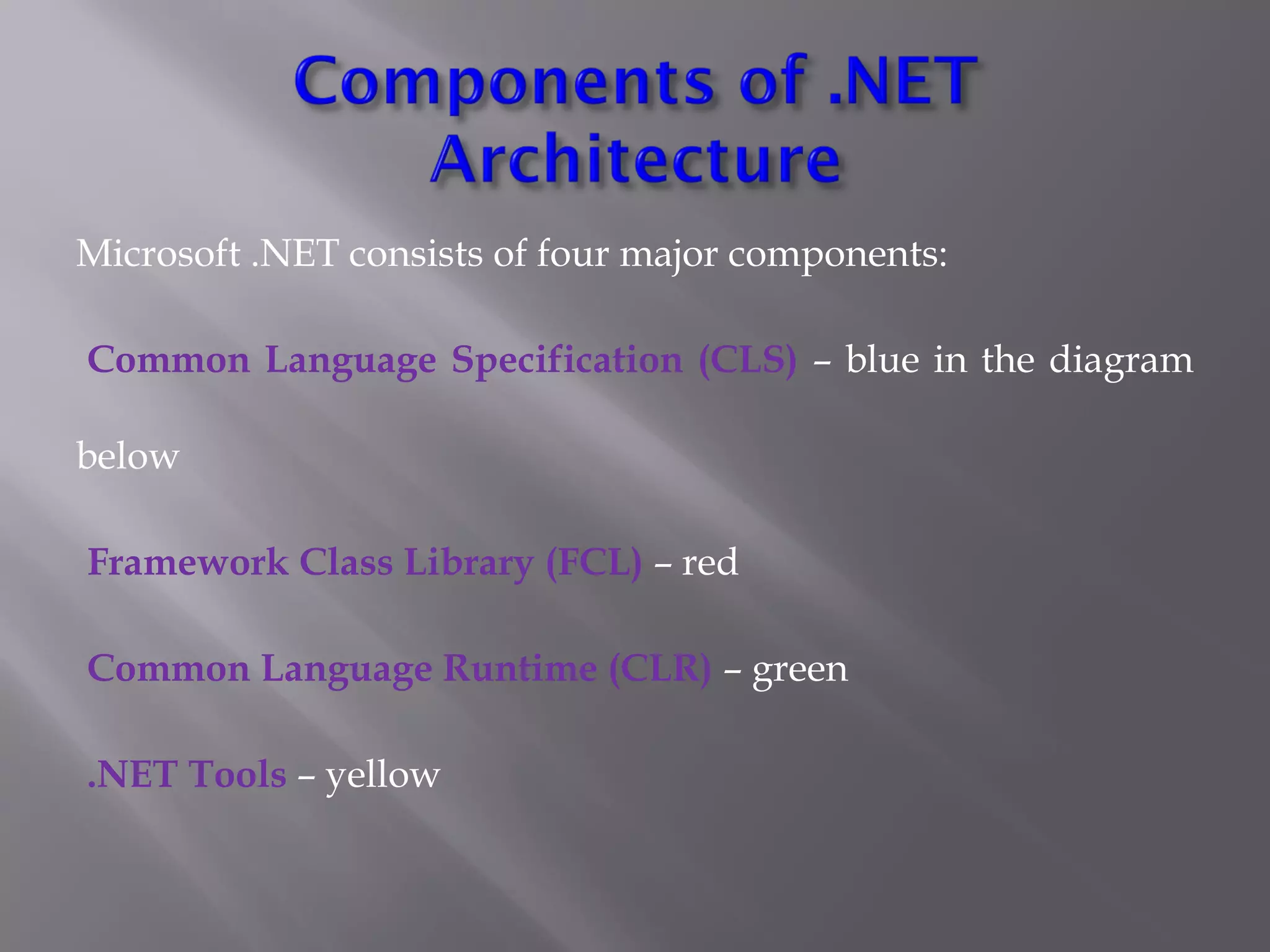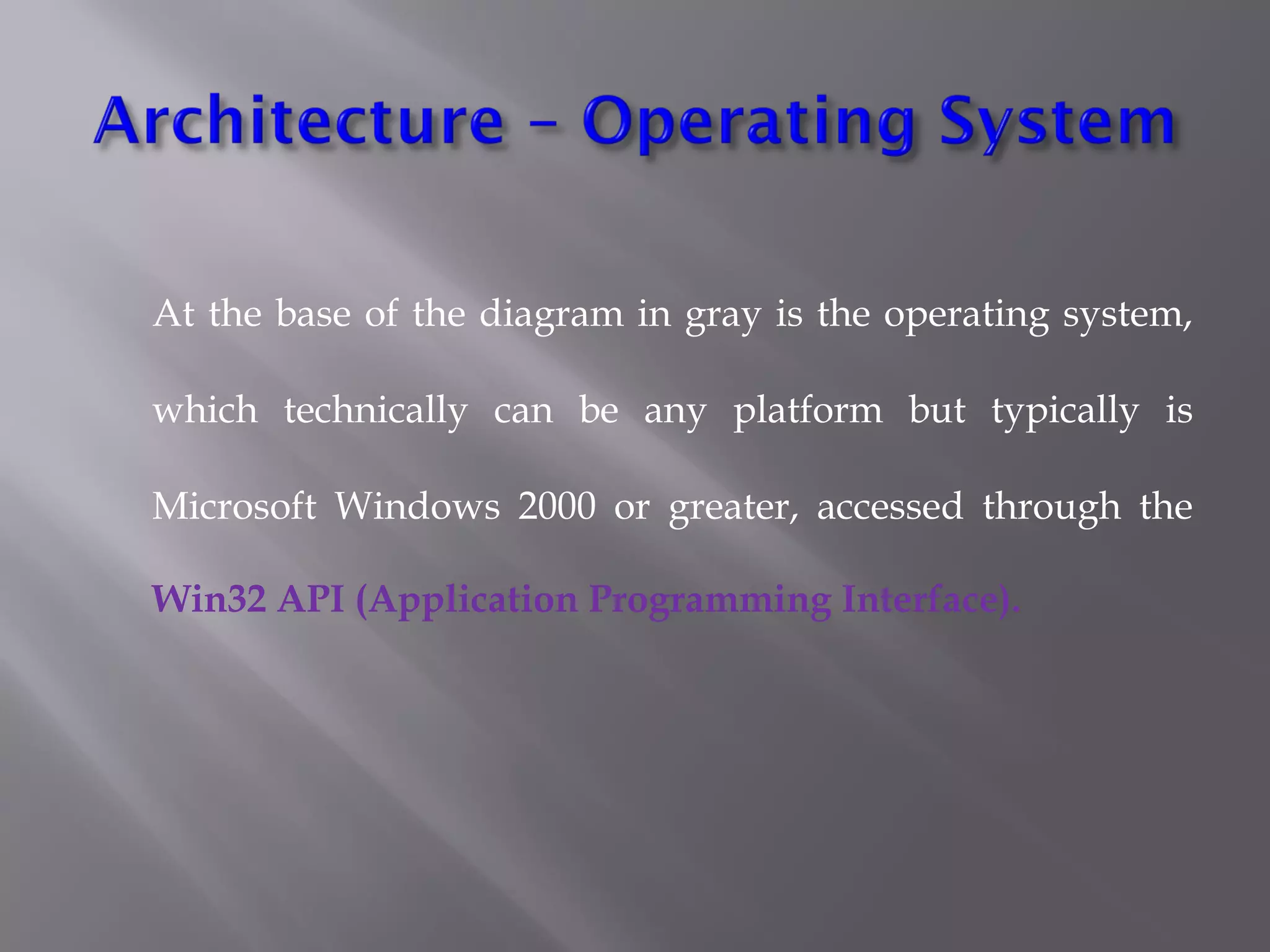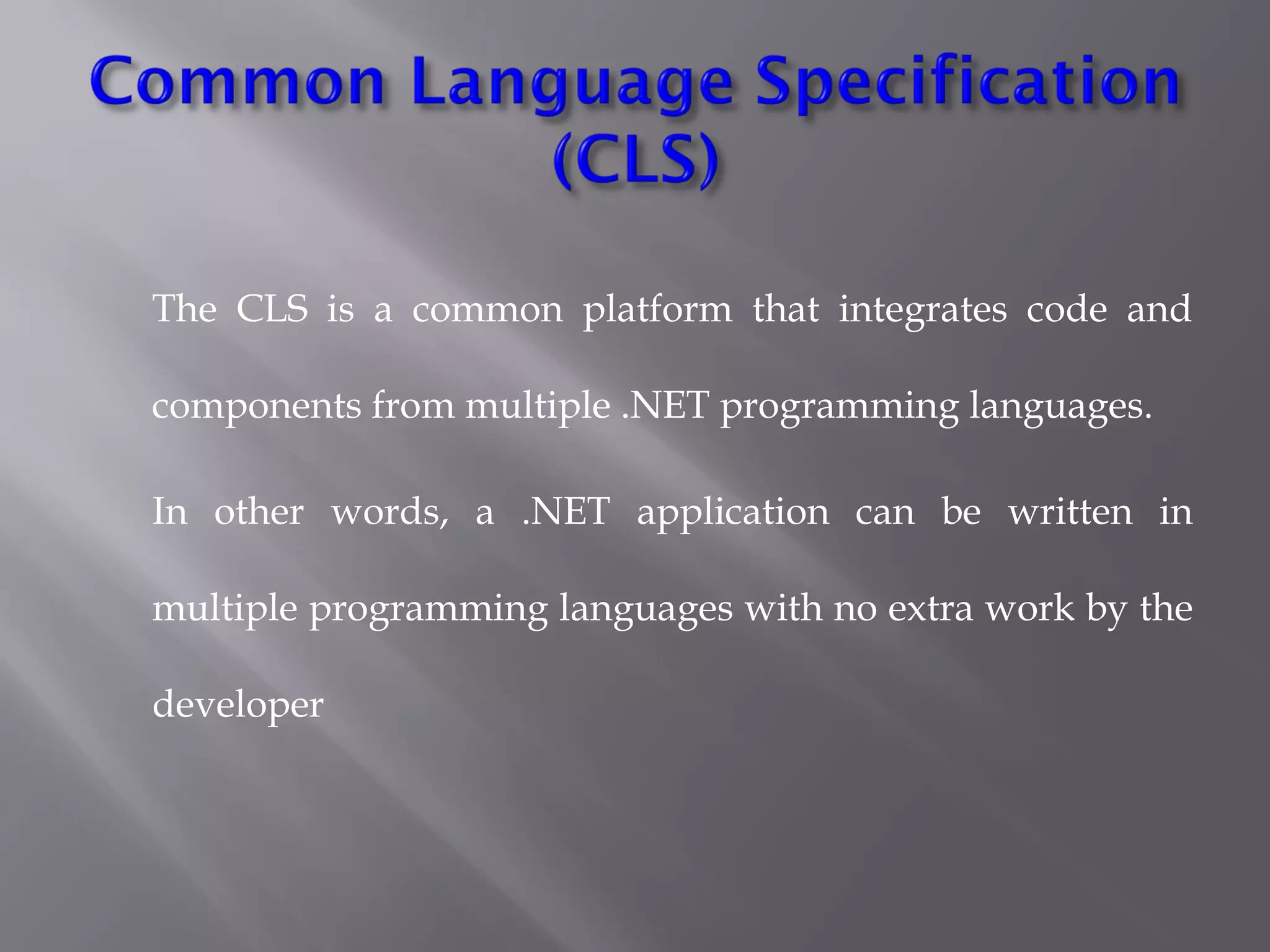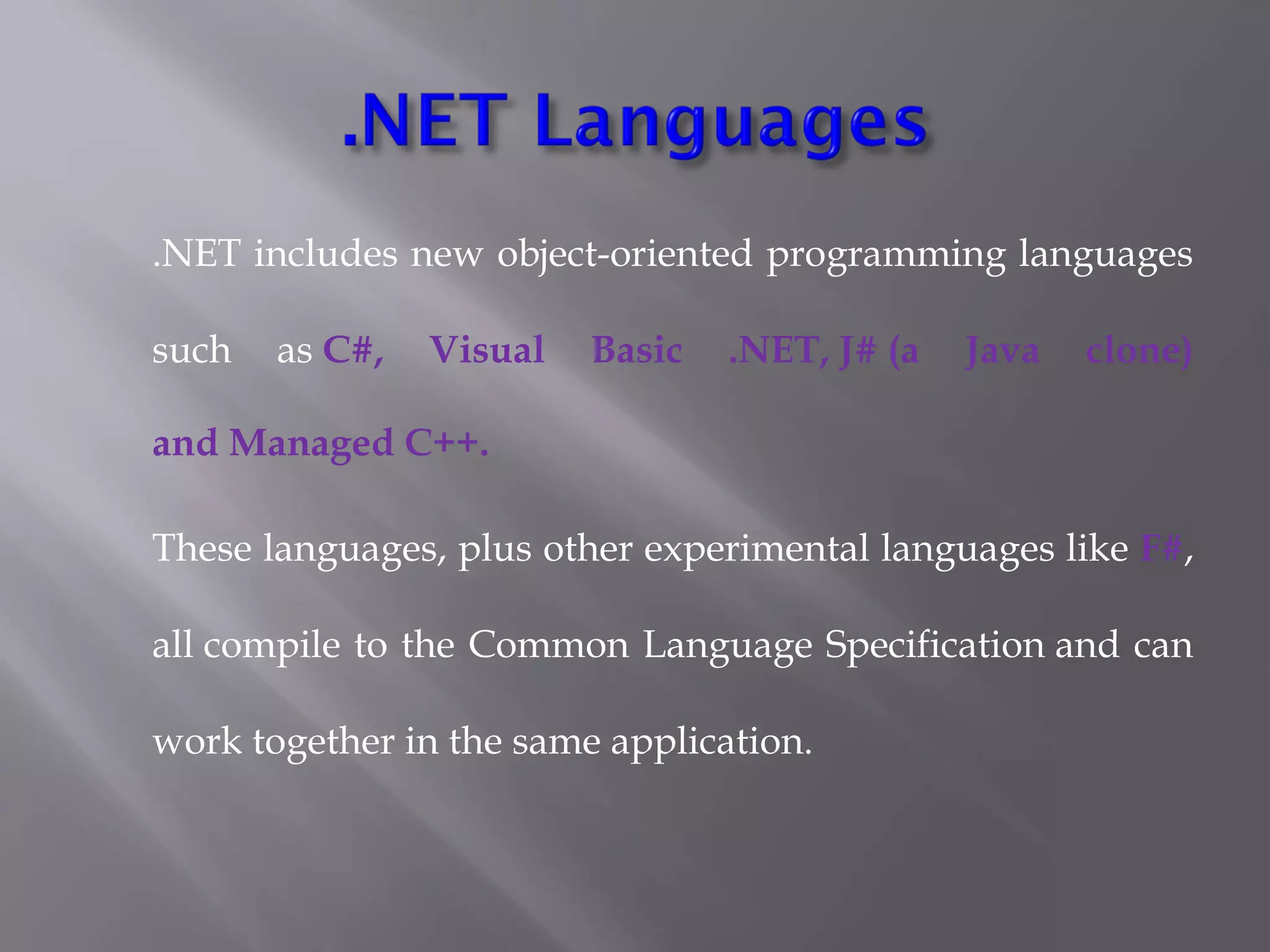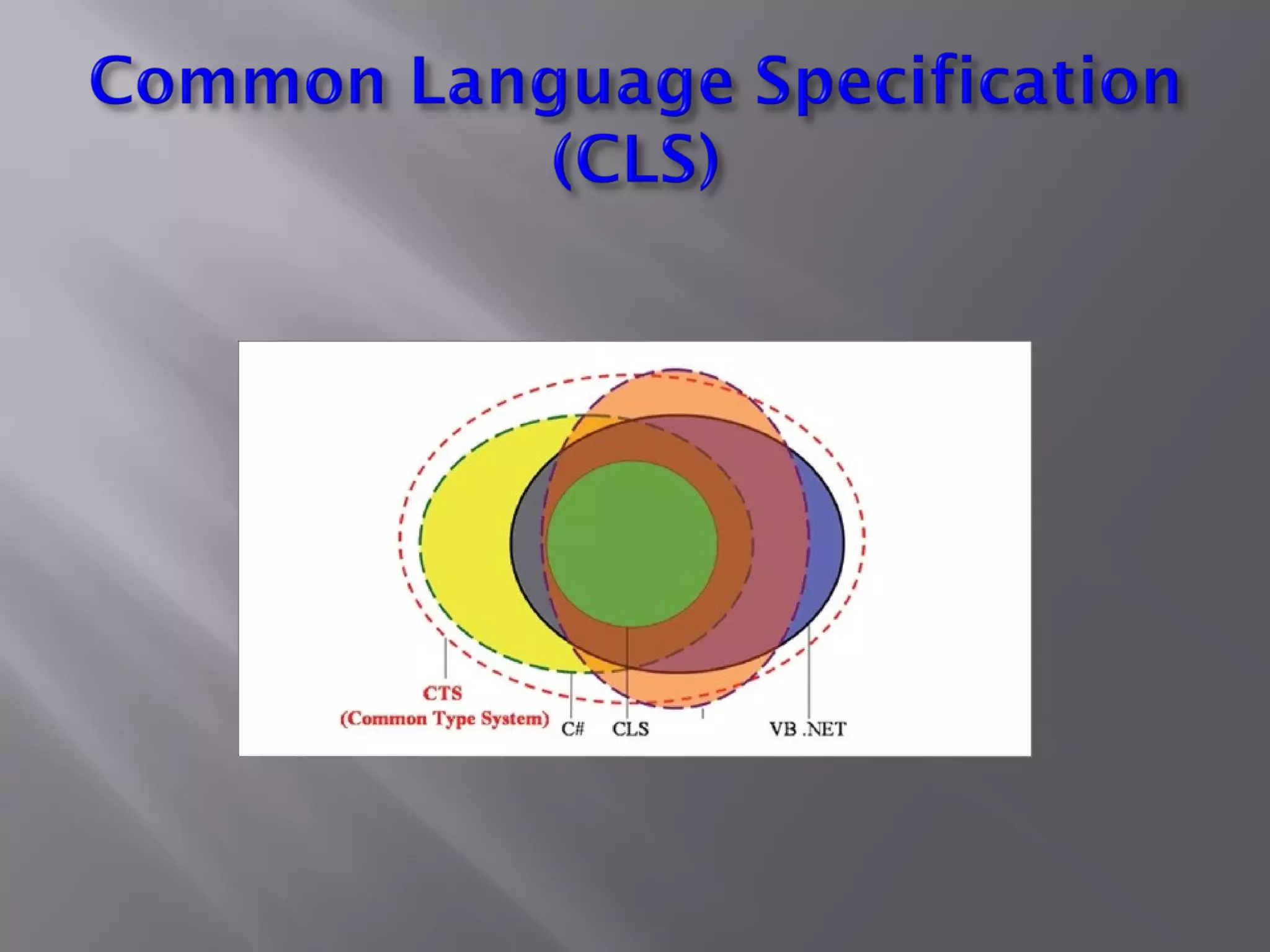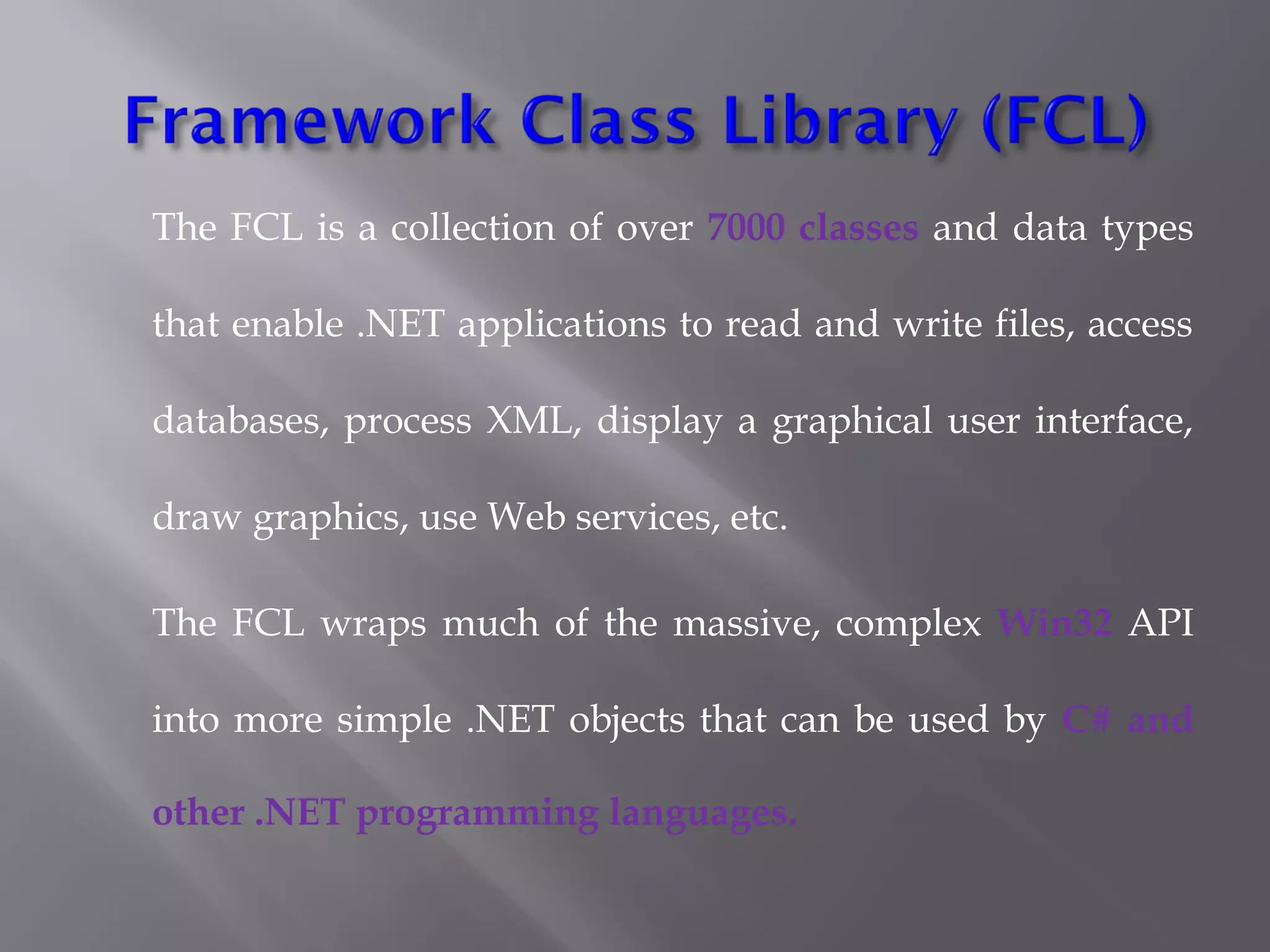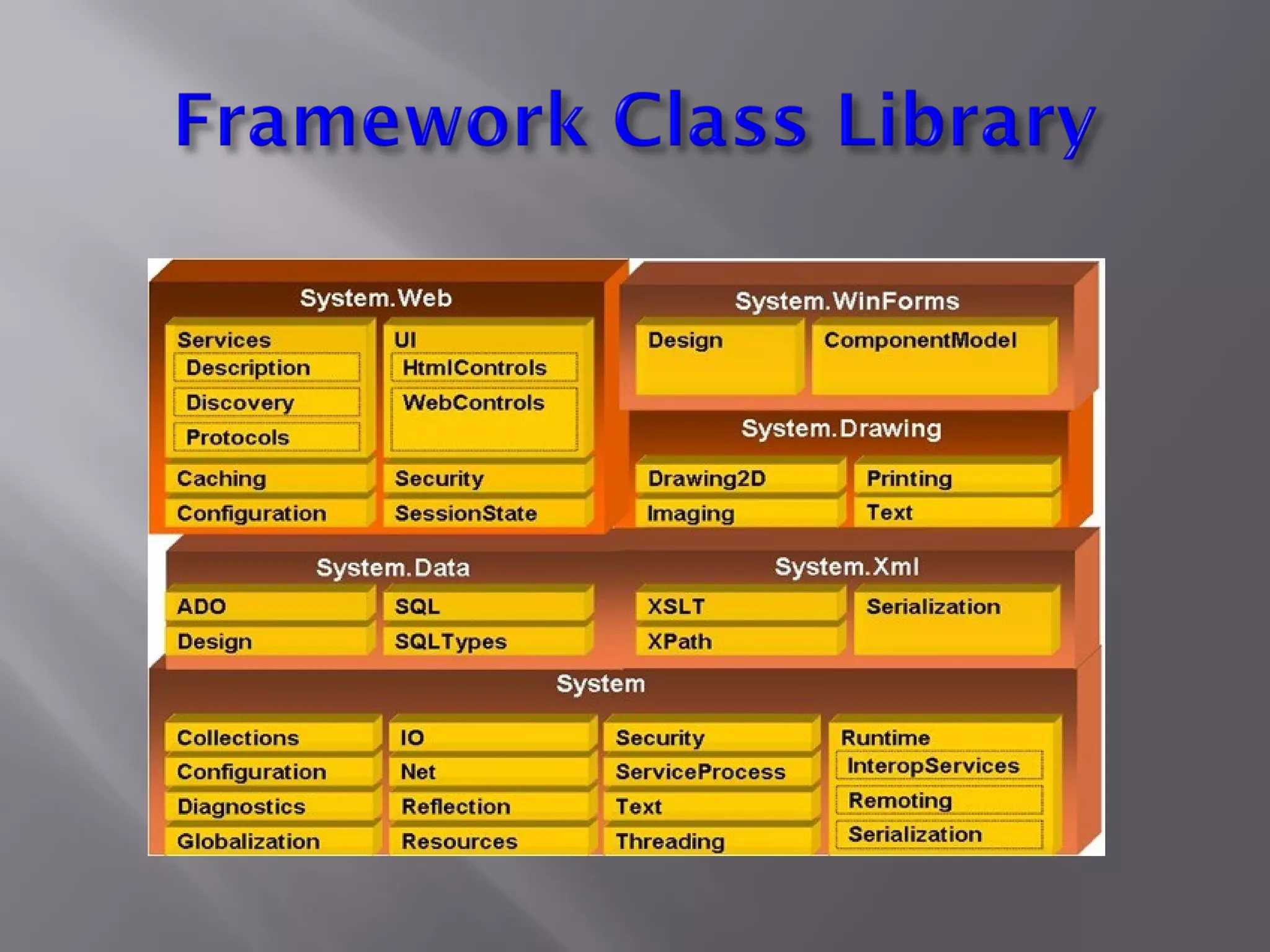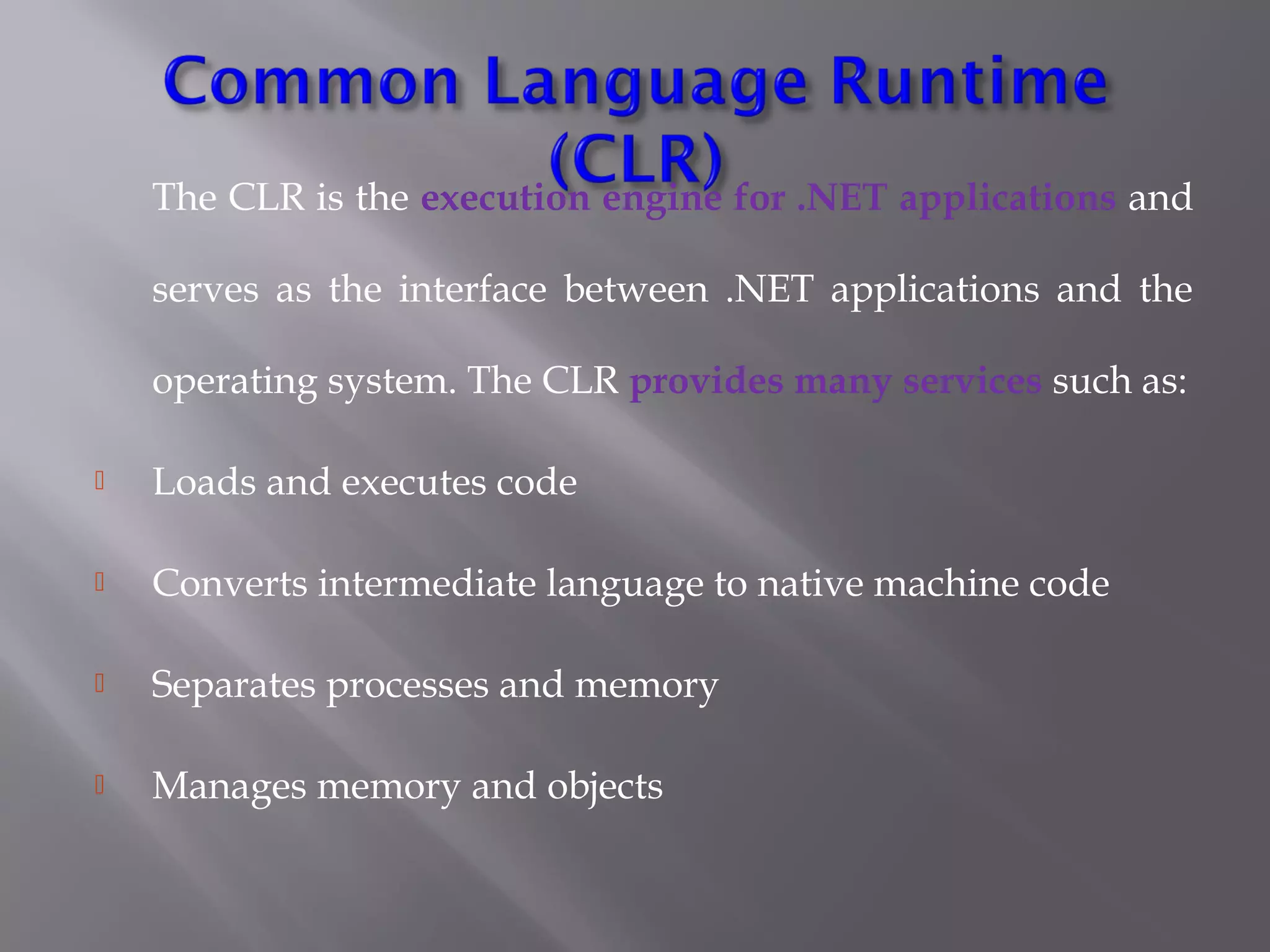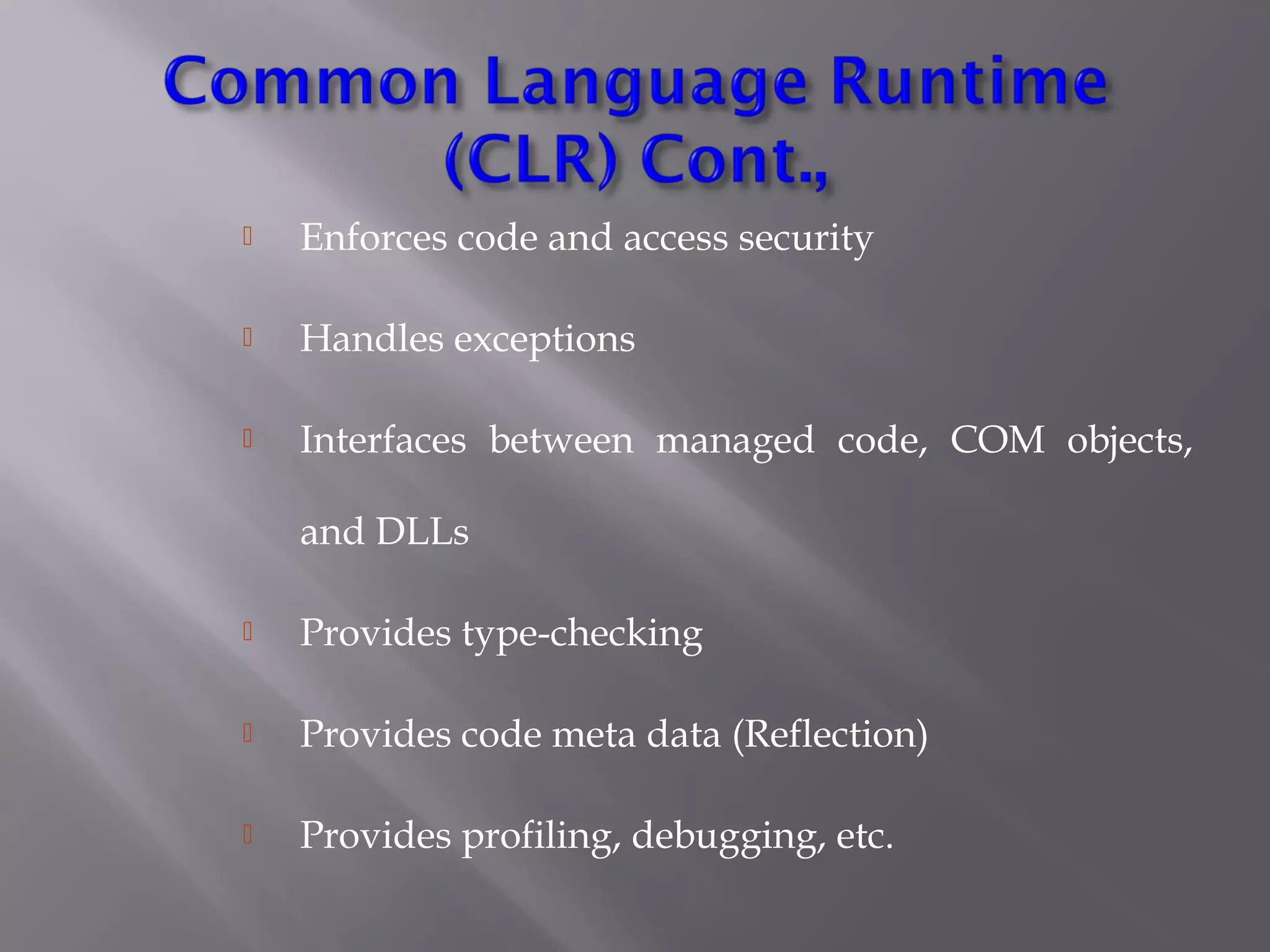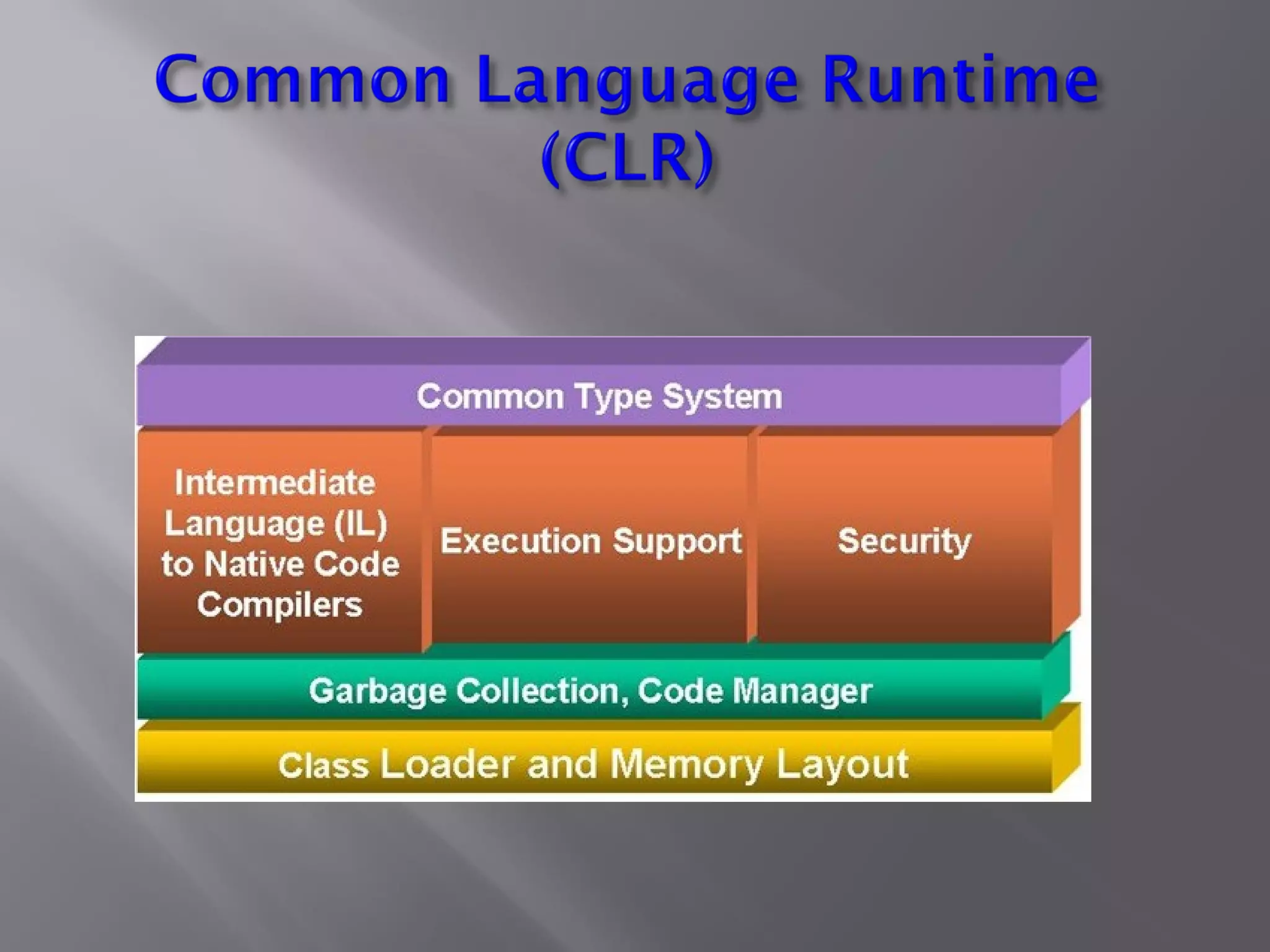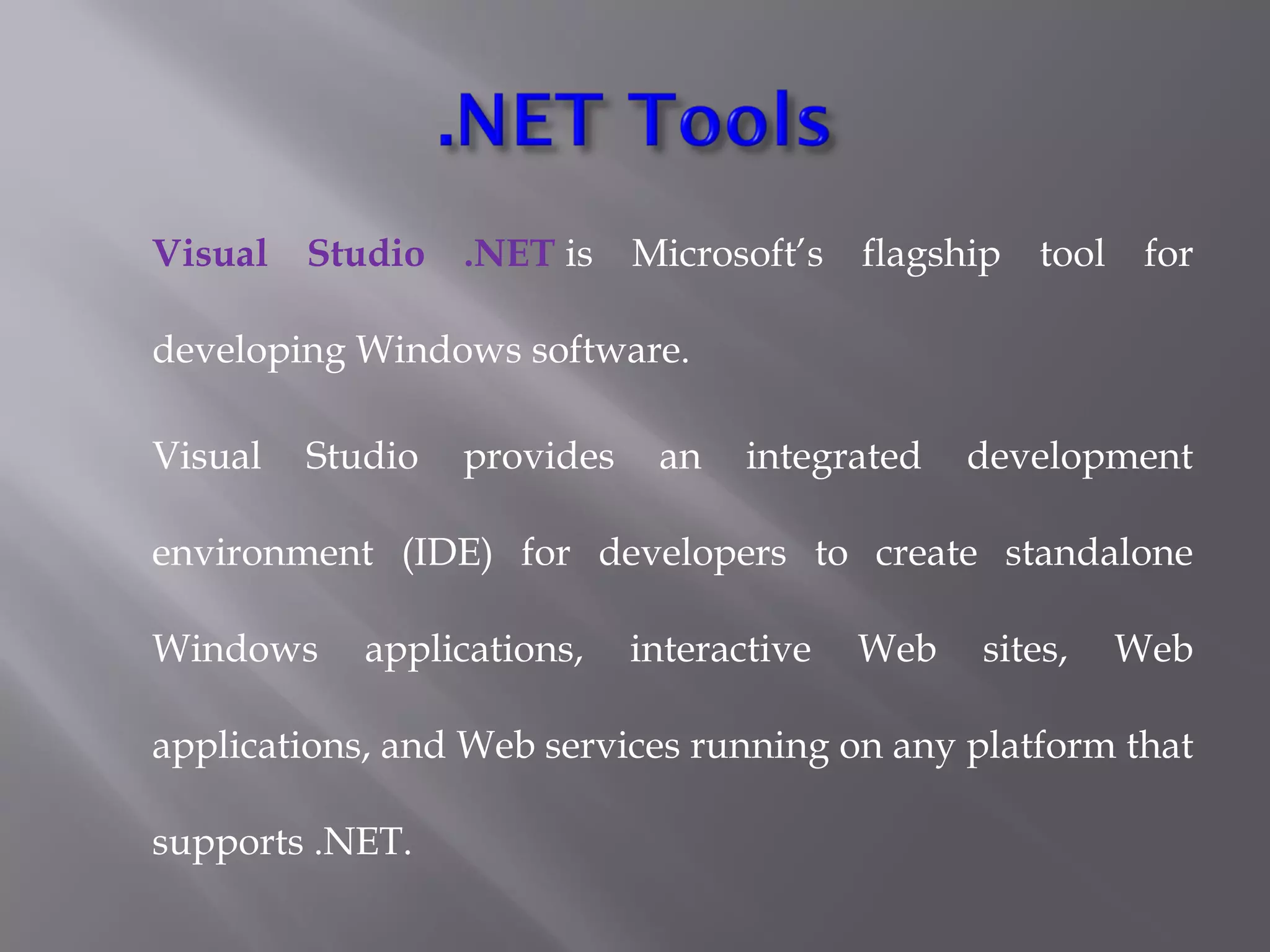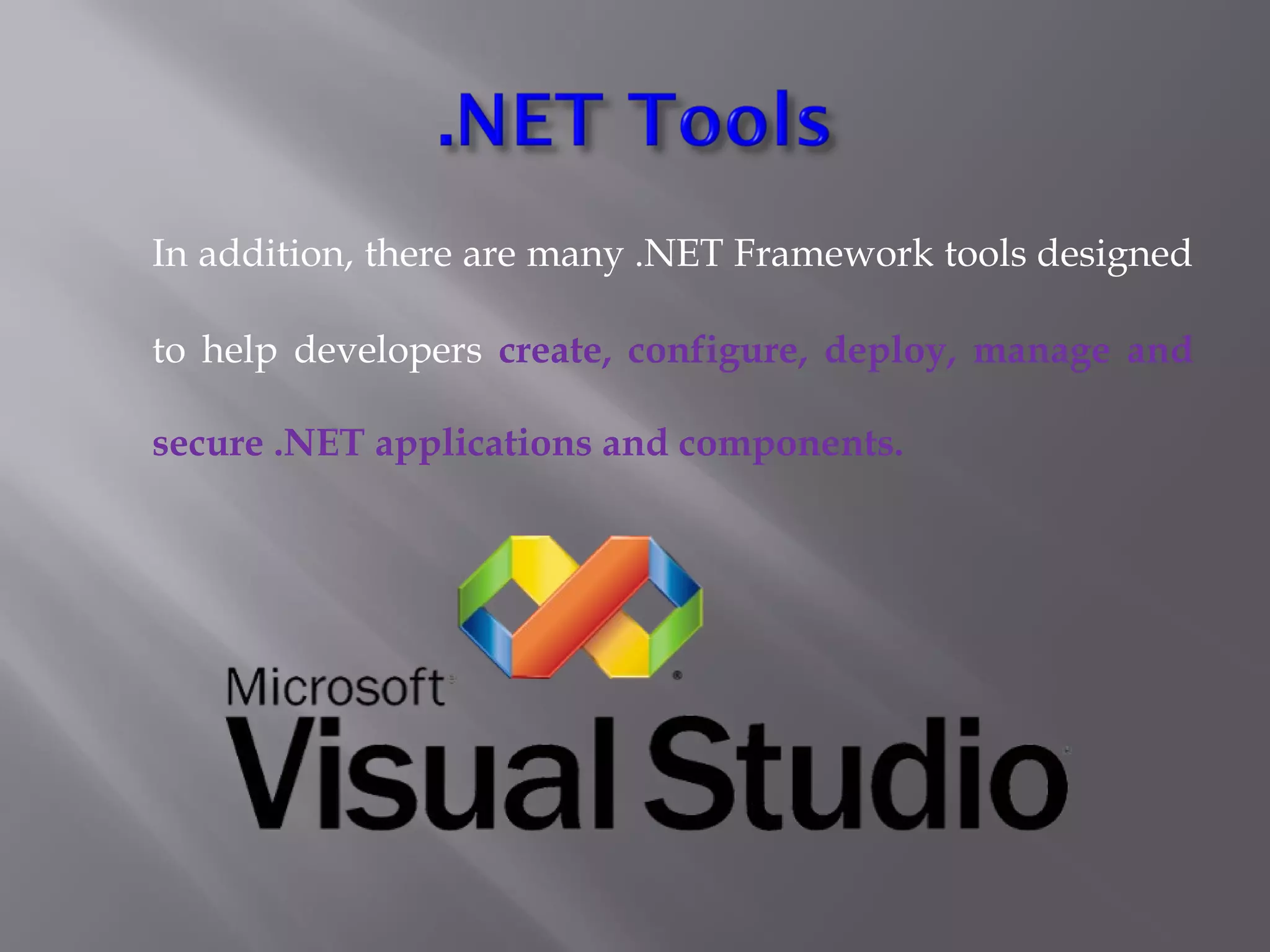Microsoft .NET is a software framework that allows developers to more easily create Windows applications. It consists of four main components: the Common Language Specification, Framework Class Library, Common Language Runtime, and .NET tools. The Common Language Specification allows applications to be written in multiple programming languages, the Framework Class Library provides reusable functionality, and the Common Language Runtime handles execution and interfaces with the operating system. Visual Studio .NET is Microsoft's integrated development environment for building .NET applications.
